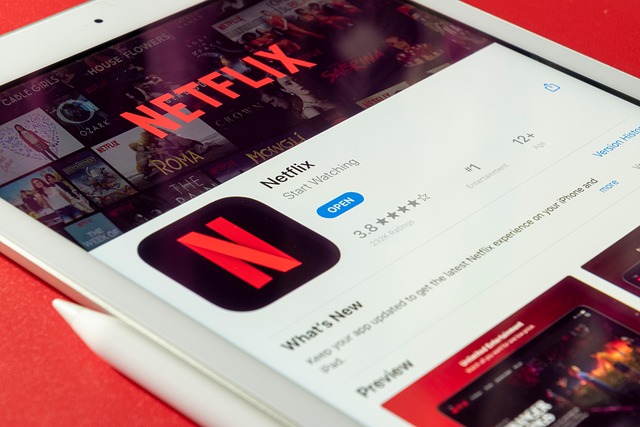Online learning has grown from a niche offering to a central pillar of modern education. Yet, despite its rapid expansion, many institutions struggle to create engaging, interactive experiences that truly support knowledge building. A video stream, when thoughtfully integrated, can transform passive consumption into dynamic, collaborative learning, bridging the gap between remote and in‑person classrooms.
How Video Streams Shape the Learning Landscape
At its core, a video stream delivers real‑time audiovisual content, allowing educators to convey information, demonstrate complex procedures, and respond instantly to student questions. This immediacy mirrors face‑to‑face instruction and preserves the rhythm of a traditional lecture while adding the flexibility of online access. Moreover, the ability to pause, rewind, or replay sections empowers learners to process material at their own pace, reinforcing comprehension.
- Live Interaction: Instructors can gauge student understanding through real‑time polls and Q&A sessions, adjusting the pace accordingly.
- Demonstrations: Hands‑on subjects such as science labs or art techniques become visible to every student, regardless of location.
- Community Building: Synchronous sessions foster a sense of belonging, as learners feel part of a shared experience.
Engagement Through Multimedia Storytelling
Video streams can incorporate storytelling elements—animation, music, and narrative arcs—to maintain attention. When educators weave relevant anecdotes or real‑world examples into live lessons, students perceive content as more relatable, which improves retention. This storytelling approach is especially potent in disciplines that benefit from visual context, such as history, geography, and biology.
“When I first watched a live chemistry demonstration, I could see the reaction unfold before my eyes. The video stream turned abstract equations into tangible, memorable moments.” – Graduate student, Chemistry
Fostering Collaborative Knowledge Building
Video streams can be paired with breakout rooms, collaborative whiteboards, and shared document editing to encourage peer learning. Instructors often assign group projects that require synchronous discussion, allowing students to negotiate meaning and co‑construct solutions in real time. This process not only deepens understanding but also cultivates essential skills such as communication, critical thinking, and teamwork.
- Set clear objectives for each breakout session.
- Use shared visual tools so all participants can contribute equally.
- Rotate facilitators to give every group member leadership experience.
Accessibility and Inclusivity
One of the most significant advantages of a video stream is its potential to democratize education. Learners from diverse socioeconomic backgrounds, varying time zones, and with differing physical abilities can participate in the same session. To maximize accessibility, instructors should provide captions, transcripts, and adjustable playback speeds. These features ensure that everyone can engage with the material on an equal footing.
Overcoming Common Challenges
Despite its benefits, the implementation of video streams in online education is not without obstacles. Technical issues, such as bandwidth limitations and software compatibility, can disrupt learning. Furthermore, instructor readiness and student digital literacy often vary, leading to uneven experiences. Addressing these challenges requires a multifaceted strategy.
- Technical Infrastructure: Institutions must invest in reliable servers, bandwidth guarantees, and platform support.
- Professional Development: Educators benefit from workshops that teach best practices for live streaming, content design, and student engagement.
- Student Support: Orientation modules that cover platform navigation, digital etiquette, and troubleshooting can reduce friction.
Data-Driven Feedback Loops
Analytics embedded in video streaming platforms provide insights into viewership patterns, pause points, and engagement metrics. By analyzing this data, instructors can identify which concepts cause confusion or disengagement and refine future lessons accordingly. Continuous improvement, driven by real‑time data, ensures that the video stream remains a living, evolving educational tool.
The Future of Video Streams in Online Education
As technology advances, video streams are poised to become even more immersive. Virtual reality (VR) and augmented reality (AR) overlays could allow students to step into historical sites, interact with 3D models, or conduct virtual experiments. Artificial intelligence (AI) could power adaptive streaming, automatically adjusting difficulty and pace based on student performance. These innovations promise to elevate knowledge building from passive listening to experiential exploration.
Strategic Integration for Long-Term Success
To harness the full potential of video streams, institutions should adopt a strategic framework that aligns technological capabilities with pedagogical goals. Key elements include:
- Curriculum Alignment: Ensure that video content complements learning outcomes and assessment methods.
- Student-Centric Design: Incorporate learner feedback to tailor streaming experiences.
- Scalable Infrastructure: Plan for growth by selecting platforms that can handle increasing numbers of concurrent users.
In sum, the video stream stands as a powerful catalyst for knowledge building in online education. By delivering live, interactive, and accessible learning experiences, it bridges geographic and temporal divides, promotes collaboration, and adapts to individual learning styles. As educators, technologists, and learners continue to explore its possibilities, the video stream will remain a cornerstone of effective, engaging, and equitable education for generations to come.




